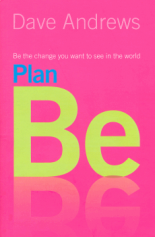Protesting Through Intervening
Dave Andrews
The earliest intervention I recall which I initiated myself was at school in Inala, against a big bully who was bashing a small boy with a disability in my class.
In those days Inala was considered, on the basis of most socio-economic indicators of disadvantage, to be one of the most deprived and dysfunctional outer suburbs in Australia. As my father accepted a call to the Inala Baptist Church, it meant our family moved into the neighbourhood and I was sent to study at Inala State High School. The school was as rough and ready and aggressive as the neighbourhood in which it was embedded and enmeshed.
As a follower of Jesus, I intentionally tried to make friends with all the kids in my class, especially those who seemed to have few friends. One kid with an intellectual disability was quite isolated, which made him vulnerable to attack. The class bully was a big boy who was a boxer. He practiced his boxing skills by punching the concrete posts around the school building with his bare fists. As a result, his knuckles were covered in bloody raw angry callouses. He took every opportunity he could to assert his total dominance in the class by beating up on the more defenceless kids. And, as a follower of Jesus, I felt constrained to intervene on behalf of the kid with an intellectual disability.
Every time the bully attacked the kid, I would step in between them, protecting the kid, and asking the bully to back off and give the kid a break. As he got increasingly annoyed with me, instead of taking a step back, the bully used to take a step forward, get in my face and punch me in the head instead of the kid. This become a bit of an unhappy pattern. As a follower of Jesus, I thought the best way to break the cycle of action and reaction was to befriend my enemy, so I invited the bully to the games night at the church youth group. Unfortunately for me, the bully saw this as an opportunity to break the cycle of action and reaction, by seizing the chance, outside school, to completely smash my attempts at resistance, by bashing me into submission.
He came up behind me while I was standing outside the church on the church steps and hit me in the back of the head. I fell down the steps and sprawled face down, flat out on the street. While I was defenceless, down on the ground – as they say in Inala – ‘he kicked the shit out of me’. Fortunately for me, some passers by intervened, stopped the stomping, and called for an ambulance. While the paramedics were carrying me to the ambulance on a stretcher, believe it or not, I remember saying, from somewhere deep inside me, to the bully who was standing nearby, ‘Listen mate, no matter what you do to me, you can’t make me hate you. We’ll sort it out when I get back.’
I was rushed to hospital where I underwent emergency surgery to remove a suspected ruptured spleen. And, after I recuperated, I returned to school, only to find that the bully was now isolated, because he was universally despised for hitting me from behind and ‘kicking the shit’ out of me. The situation provided a perfect opportunity to befriend my now friendless enemy. We reconciled and I was able to help ‘Tom’ get reintegrated back into the class
Over years I have learnt about how best to intervene. Usually when I try to intervene nonviolently in a violent situation I take the following steps:
- Take a deep breath
- Assess degree of risk
- Don’t react to provocation
- But act and/or ask for help
- Approach keeping distance
- Attend to the antagonist/s
- Listen empathically to complaints
- Speak peacefully to their concerns
- Deflect and diffuse their aggression
- Try to work out a way towards a ‘win-win’ solution
- If necessary, take a deep breath and go round again
- If I can’t de-escalate the aggression, Ange call’s the police. (In my experience, if the police do come, its often too late)
A typical example of the way I intervene is when I heard someone screaming and saw a huge white man beating a fragile black woman with a lump of wood in the middle of the road. I walked up to them (I walk, not run), stopped two meters away (so not to get into a perpetrator’s face) and greeted the man, (I address the perpetrator, not the victim, because he has the power) saying ‘G’day mate. Can I help you?’ (I present as polite, respectful and helpful). He turned to me (already distracting him) and said ‘The bitch stole my purse.’ (Now he’s talking to me, not beating her.) I said ‘If you let me speak to her, maybe I can help you sort that out.’ (I try to get him to see my intervention as an option for him to solve his problem – as well as hers.) He nodded, stepped back to give me space to approach the woman (who lay bleeding on the road) and said ‘She can keep the purse. I just need my puffer.’ (Apparently he’d got an asthma attack from beating the woman.) I asked her for the puffer, she opened the purse, gave it to me and I gave to the man. (Playing a mediating role). He grabbed the puffer, took a puff, and stomped off. (Now the immediate threat was neutralised). So I was able to help the woman up, walk with her to the side of the road and start to tend to her wounds. I then asked her what she wanted me to do. (Restoring her power.) ‘Call a cab, so I can go to my relatives,’ she said. So I called a cab and waited with her on the side of the road until the cab arrived (just in case the man came back). She then jumped in a cab and drove to her relatives house (where she felt she would feel safe.) [1]
[1] ‘My Struggle For Good Against Evil’ Zadok Papers S226 Autumn 2018 p3-4




Comments are closed.